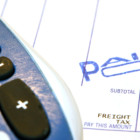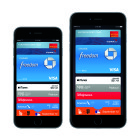It is with great pleasure that Ardent Partners announces the publication of its latest state of accounts payable (AP) research report—“ePayables 2015: Higher Ground.” Like the annual reports that came before it, the 2015 ePayables report focuses on the state of the AP function as well as assessing how AP teams leverage ePayables solutions to improve business results and offering up Best-in-Class metrics that allow readers to benchmark their own operations against top performers. (The report is available for download here, here, here, here, and here.)
The Three Most Common Accounts Payable Technologies
Technology plays a critical role in moving accounts payable to the next level of performance. Without the right AP automation solutions in place, there is no amount of process improvements that can increase the number of invoices an AP team member is manually able to input, verify, and send for approval. Automation is also the best method to combat the high cost of manually processing an invoice, as AP teams with high levels of automation experience per-invoice processing costs that are 60% to 80% lower than teams that manually input and approve invoices.
When it comes to the types of AP technologies that enterprises install to streamline the invoice approval process, however, there are three main solutions that are chosen more than any other option on the marketplace today. These solutions, according to Ardent’s ePayables 2015 survey, are document imaging/scanning (72%), automated routing and approval workflow (52%), and automated data capture and extraction (38%).
These three technologies fall under the category of Scan, Capture, and Workflow Solutions—a category of solutions that focuses exclusively on the initial phases of the invoice process, such as invoice receipt and data entry into the accounting system/general ledger. Document imaging/scanning is one of those solutions that quite literally is what it says: a tool that takes a paper-based document and “scans” it to create a digital file. On their own, document imaging/scanning solutions do not really add much value to the process, as a scanned invoice still needs to be entered into the accounting system for approval.
That is why, in general, document imaging/scanning solutions tend to come “bundled” with automated routing/approval workflow and automated data capture solutions. Automated data capture and extraction tools, such as OCR and ICR, pull the necessary data from the scanned invoice and add it into the financial system. Automated routing and approval workflow tools then take over, and allow the AP team member to move the digital invoice along a prescribed pathway to final approval.
The popularity of this class of tools can most likely be ascribed to their relatively low impact compared to other electronic invoicing (eInvoicing) solutions. Scan and capture solutions do not really affect how a supplier submits their invoice, so a buyer can implement this class of tool on their internal systems without having to worry about supplier enablement onto a platform as with a business network or a more pure-play eInvoicing system. More to the point, many organizations already have the necessary tools to scan paper invoices into a digital system (think all-in-one printers) and may not need a special technology installation for at least that part of the process.
Now, this does not mean these three technologies—when used together—are not powerful. Rather, chaining these three systems together can make a huge difference in the number of invoices processed per full-time employee and significantly speed invoice processing. For a great many organizations, in fact, this is where the eInvoicing journey ends as the efficiencies gained from scan and capture solutions are more than enough to bolster their financial results. For others, however, scan and capture tools are merely the first step on the road to a full eInvoicing solution that allow them to figure out how to run a fully digital process before making a more significant technology investment.
Final Thoughts
The top three ePayables technologies installed today—document imaging/scanning, automated routing and approval workflows, and automated data capture and extraction—have the broadest market penetration of any ePayables technology in the market today. These solutions can also be tremendously powerful and easy-to-use, helping to automate the AP process without changing the way suppliers already submit invoices. These three common AP technologies thus can make a huge impact on the way the accounts payable team works with minimal effect on the wider enterprise, making them more achievable to implement than other solutions.
Check out these related articles for more:
ePayables 2015: What is the Biggest ePayables Priority in 2015?
ePayables 2015: 3 Important Accounts Payable Goals for the Next Two Years
ePayables 2015: How Improved Exception Handling Can Drive AP Performance
ePayables 2015: AP’s Top 3 Priorities in 2015
ePayables 2015: Moving From the Tactical to the Strategic
ePayables 2015: Reaching for “Higher Ground” in Accounts Payable
The ePayables 2015: Higher Ground Report is Now Available



